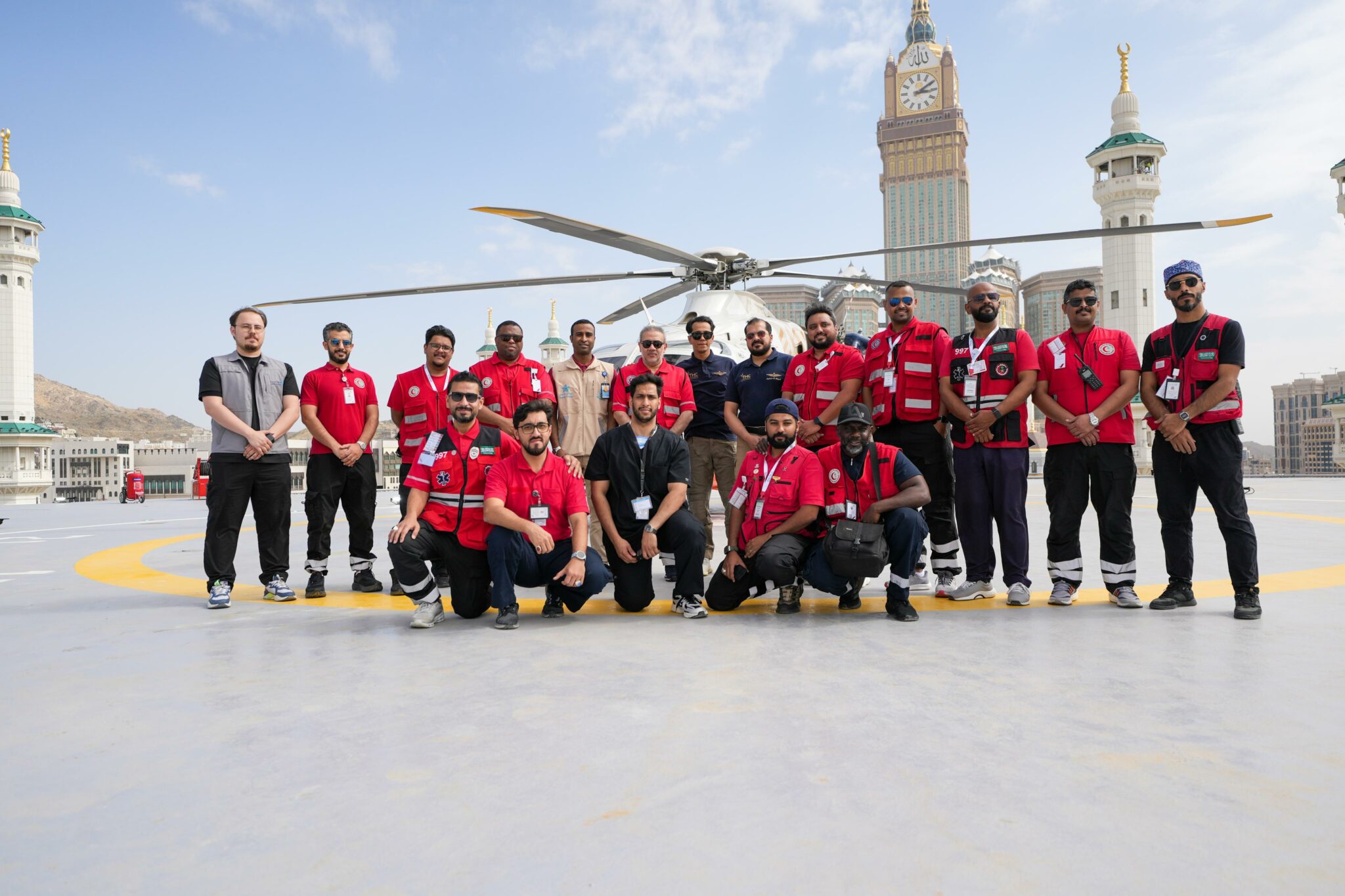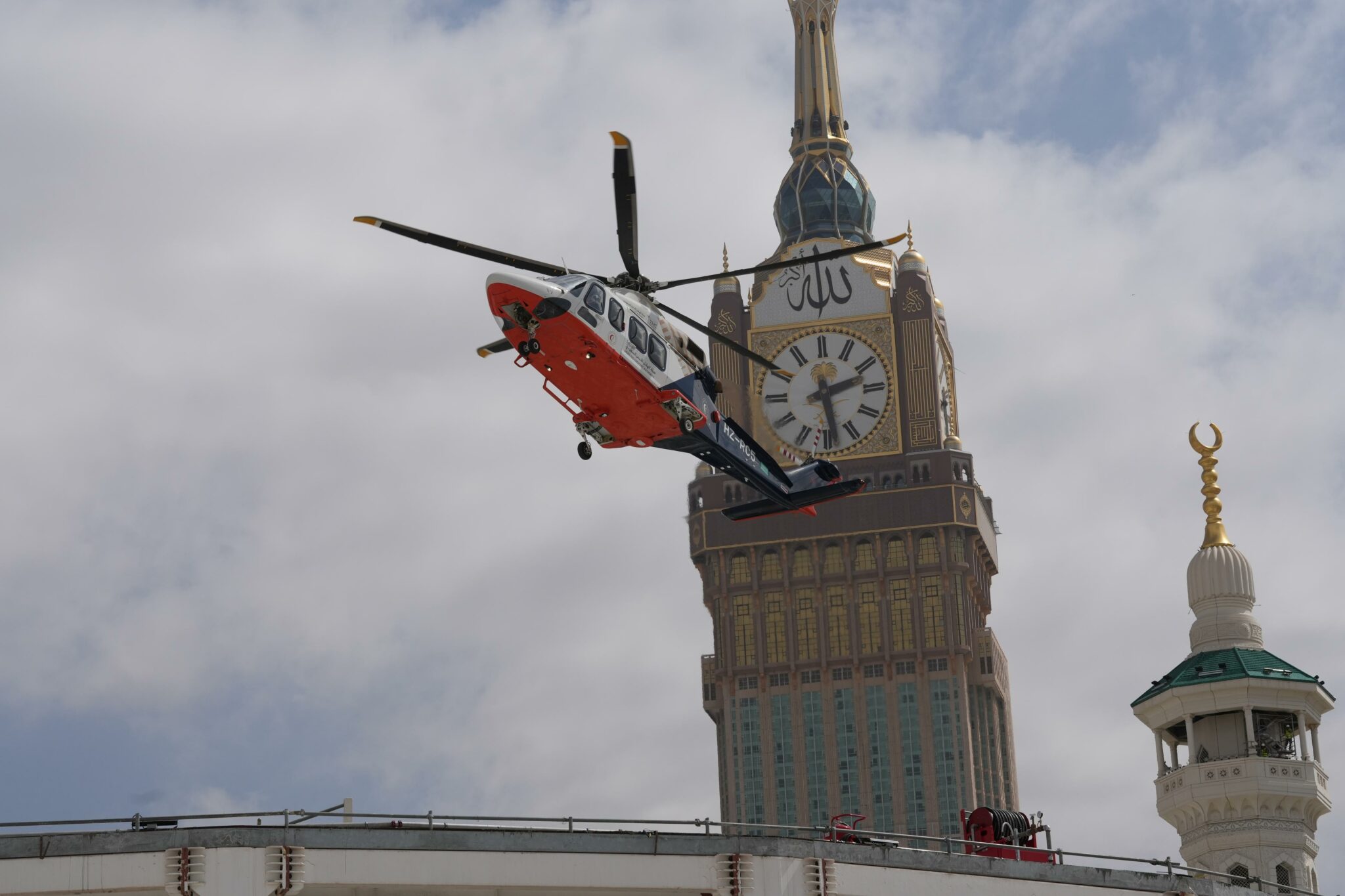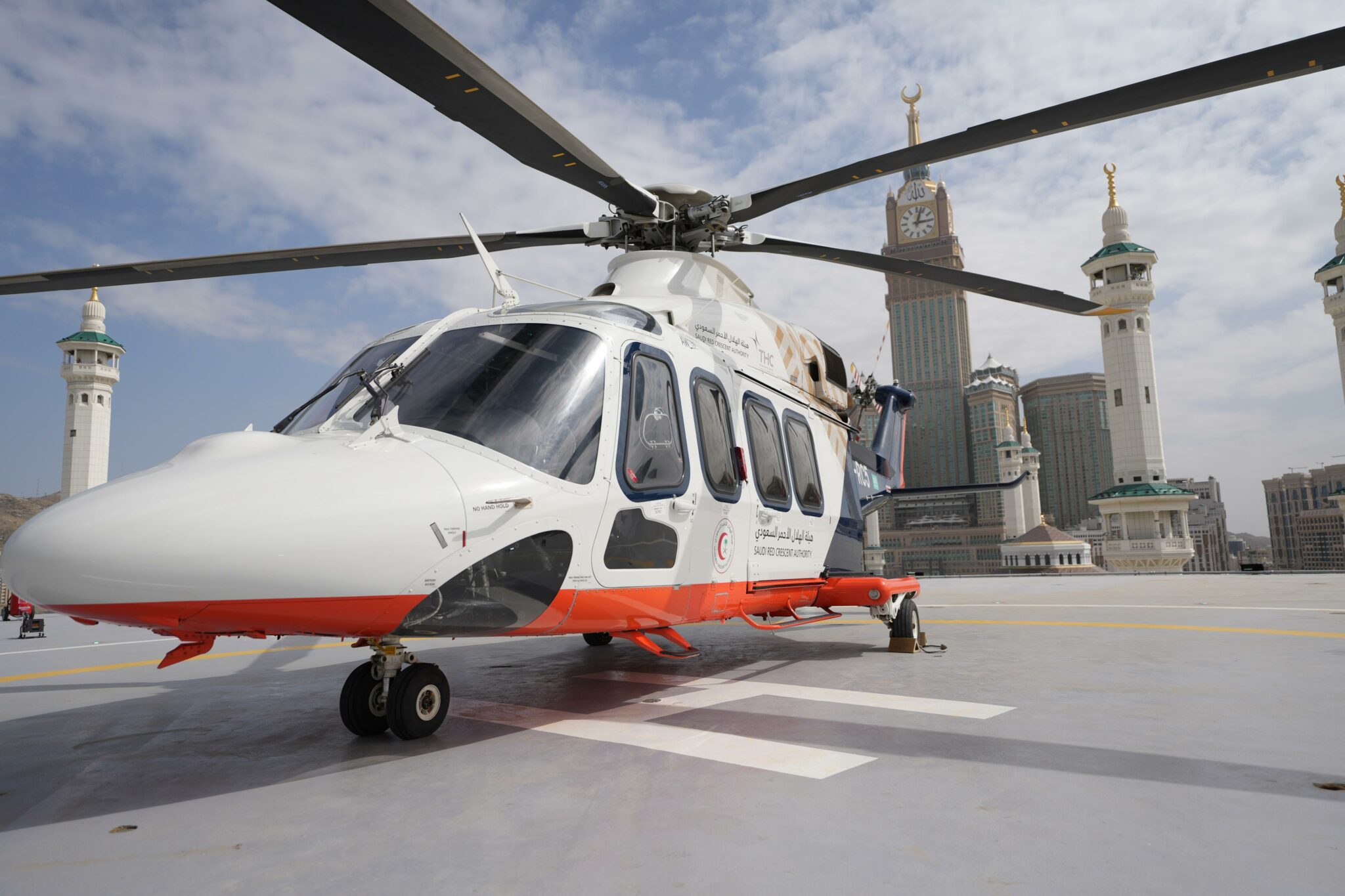
Saudi Arabia Enhances Medical Support for Umrah Pilgrims
New air ambulance services will improve medical response capabilities during the Umrah season.
Saudi Arabia recently unveiled plans to enhance its medical response capacity with the introduction of two dedicated air ambulance helipads within the Holy Mosque in Makkah. This initiative aims to facilitate rapid medical evacuations for critical patients to hospitals across the Kingdom, marking a significant improvement in the healthcare infrastructure as the country prepares to accommodate millions of pilgrims during the Umrah season.
 Air Ambulance
Air Ambulance
The newly established helipads will expedite transportation for patients to specialized hospitals around the Kingdom, alleviating capacity constraints and guaranteeing timely, top-notch medical care. Helicopters are set to operate around the clock, with the capability to reach some hospitals within minutes. Additional helicopters can be deployed at short notice if needed, underscoring Saudi Arabia’s commitment to providing a world-class experience for pilgrims.
Saudi authorities conducted an air ambulance landing simulation at the mosque’s eastern runway to ensure swift patient evacuations while meeting high medical standards.
 Helipad Installation
Helipad Installation
Minister of Health, Fahad Abdulrahman AlJalajel stated: “Saudi Arabia is reaffirming its unwavering commitment to the health and well-being of pilgrims by providing around-the-clock air ambulance support. This initiative ensures that all patients can receive the highest level of care at one of the world’s holiest and most visited sites. By transferring patients to hospitals based on their specific needs, we continue to improve health outcomes for pilgrims with both scale and speed.”
 Emergency Facilities
Emergency Facilities
Additionally, Saudi Arabia recently launched the Al-Haram Emergency Hospital, equipped with state-of-the-art technology and staffed by highly trained healthcare professionals. This facility features an ICU, laboratory, radiology department, on-site pharmacy, and designated areas for critical and rapid emergencies as well as an isolation unit for infectious diseases.
